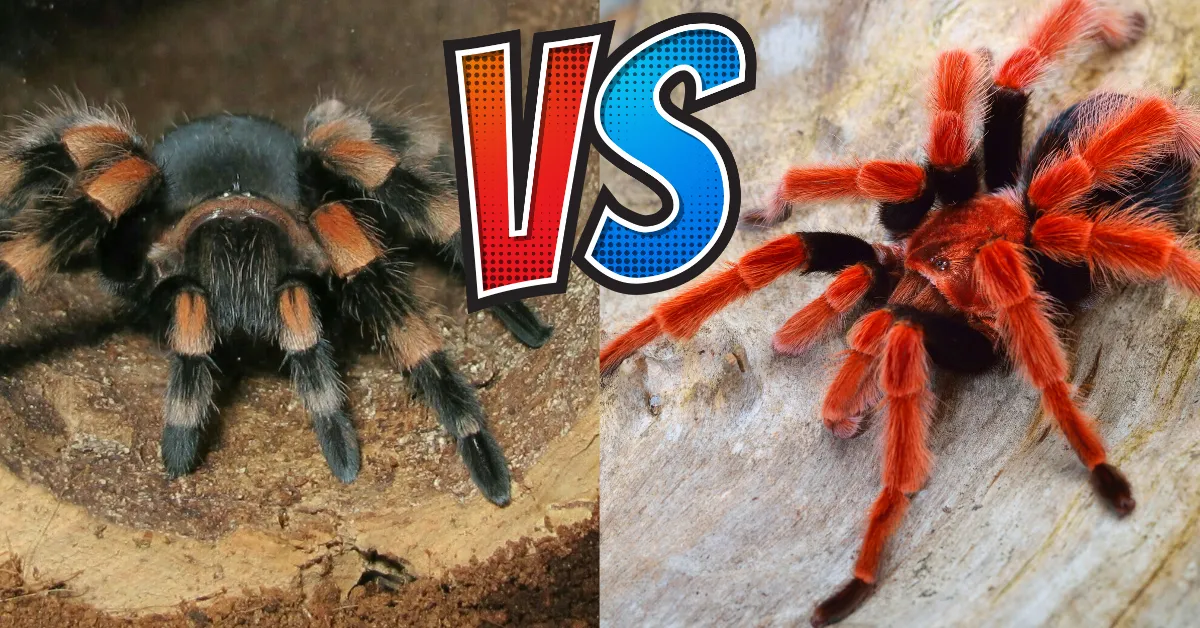Top 7 Facts About Old World Tarantulas
Old World tarantulas, fascinating arachnids, captivate enthusiasts with their striking appearance and intriguing behaviors. These spiders, native to regions across Asia, Africa, and Australia, present unique challenges and rewards for keepers. This guide unveils seven essential facts to understand these remarkable creatures, providing a solid foundation for anyone considering or currently caring for an Old World tarantula. From understanding their distinct characteristics to ensuring their well-being, this article will equip you with knowledge to appreciate and care for these amazing animals. Learn about their origins, habitats, behaviors, and the specific needs that make them such a compelling subject of study and care.
What Makes Old World Tarantulas Unique?
Old World tarantulas stand out due to their diverse characteristics, setting them apart from their New World counterparts. These spiders often exhibit more potent venom, a crucial factor in their predatory lifestyle and defensive mechanisms. Their temperament can be more defensive, displaying a tendency to be more skittish or aggressive. This difference in behavior requires experienced keepers. Furthermore, Old World species boast a stunning array of colors and patterns, making them highly sought after by hobbyists. Their habitats, spanning various environments, further add to their uniqueness. These factors contribute to the Old World tarantulas’ captivating allure, making them an exciting yet demanding choice for experienced arachnid enthusiasts.
Appearance and Characteristics of Old World Tarantulas
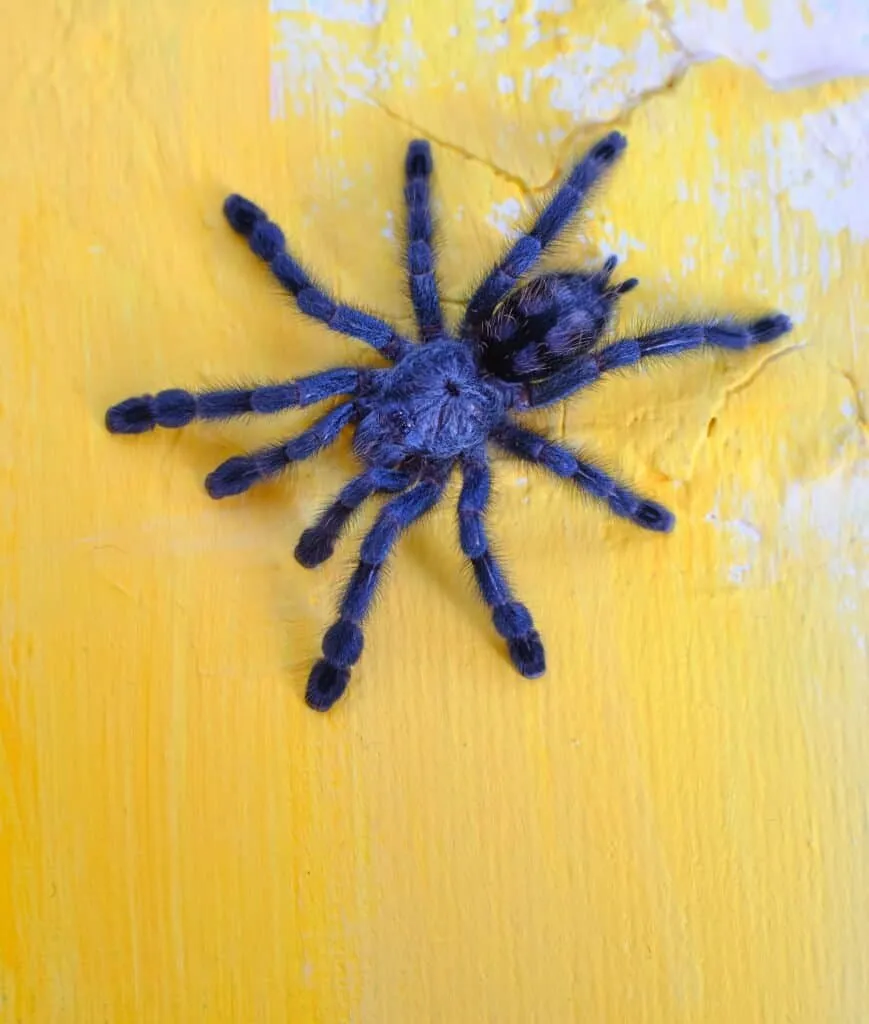
Old World tarantulas’ appearance is as varied as the regions they inhabit. These spiders showcase a wide range of sizes, shapes, and vibrant colors, providing a captivating glimpse into their diverse evolutionary paths. Understanding these characteristics is crucial for accurate identification and effective care.
Body structure and sizes
Old World tarantulas range significantly in size, with some species reaching impressive leg spans. Their bodies are divided into the cephalothorax and abdomen, covered in a protective exoskeleton. The legs, equipped with sensory hairs and claws, enable them to navigate various terrains. The size of the tarantula can vary considerably among different species, with some of the largest reaching leg spans of over 10 inches. Detailed knowledge of body structure is critical for assessing the health of the tarantula, as abnormalities can indicate underlying issues.
Coloration and patterns
Coloration in Old World tarantulas is remarkably diverse, ranging from subtle earth tones to vivid, striking patterns. These colors often serve as camouflage, helping them blend into their surroundings, or as a warning signal to potential predators. The patterns vary across species and can be a key identifier. Some species have intricate patterns on their carapace, while others display vibrant colors on their legs and abdomen. Proper lighting and observation conditions allow you to admire the full spectrum of colors. (See image: tarantula-species-examples.webp)
Habitat and Natural Environment

Understanding the natural habitats of Old World tarantulas is essential for replicating their needs in captivity. These spiders thrive in diverse environments, each influencing their behavior, diet, and overall well-being. Replicating these conditions ensures they live a fulfilling life in your care. The correct habitat setup is crucial for their survival, and the correct knowledge ensures the well-being of these creatures.
Geographic Distribution
Old World tarantulas inhabit a broad range of regions, including Asia, Africa, and Australia. Within these areas, different species have adapted to specific ecological niches. The varied distributions influence their specific needs, from temperature and humidity to diet and shelter. Knowing the origin of a specific species is critical for replicating their environment in captivity. For example, tarantulas from tropical rainforests require high humidity, while those from arid regions thrive in drier conditions. (See image: old-world-tarantula-habitat.webp)
Typical Habitats
Old World tarantulas live in various habitats, including burrows, under rocks, and in trees. Terrestrial species typically construct burrows in the ground, lined with silk to maintain stability and retain moisture. Arboreal species, on the other hand, use their silk to create webs and nests within trees or other elevated structures. The habitat choice directly impacts their behavior and the setup requirements in captivity. A well-designed habitat should mimic their natural environment.
Behavioral Traits of Old World Tarantulas
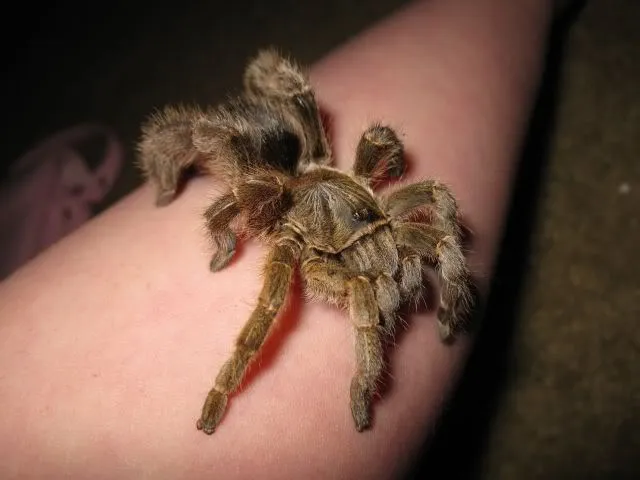
Old World tarantulas exhibit a range of behaviors that contribute to their survival and interactions with their environment. Understanding their habits is key to providing appropriate care and avoiding potential dangers. This knowledge allows you to appreciate their complex lives and interactions with their surroundings.
Defensive behaviors
Due to their more potent venom and temperament, Old World tarantulas can be highly defensive. Their defensive behaviors include raising their front legs, displaying fangs, and, in some cases, biting. They may also flick hairs from their abdomen as a warning. These behaviors are often a response to perceived threats, and understanding them helps in safely handling and caring for them. Always approach them with caution and respect their boundaries to avoid unwanted reactions.
Temperament differences
Temperament varies among Old World tarantula species. Some are known to be docile, while others are more skittish or aggressive. These differences can impact how they react to handling and their overall care requirements. Researching the specific species is essential. This knowledge informs how you interact with the tarantula and how you manage its habitat, helping to create a secure and enriching environment. It is essential to always approach the tarantula slowly and with respect.
Diet and Feeding Habits
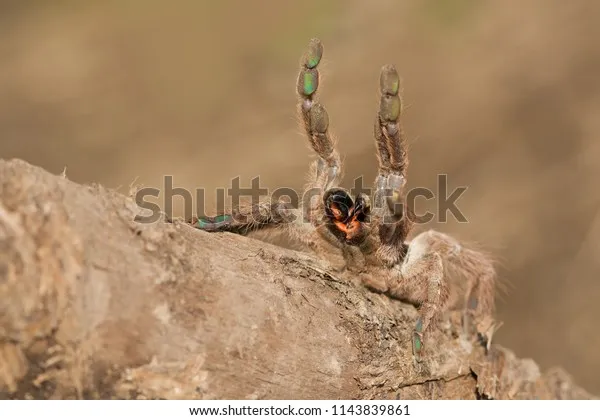
Proper nutrition is paramount to the health and growth of Old World tarantulas. Understanding their dietary needs, including the types of food and feeding frequency, ensures they receive the necessary nutrients for a healthy life. A balanced diet is essential for optimal growth and well-being. The right feeding practices will support their health, promoting molting and overall vitality.
What do they eat?
Old World tarantulas are primarily insectivores, feeding on various insects like crickets, roaches, and mealworms. Some larger species may also consume small vertebrates like small lizards or mice. The specific diet should be based on the tarantula’s size and species. Providing a variety of food items helps ensure a balanced intake of essential nutrients. Always ensure the insects are gut-loaded before feeding to provide added nutritional value. (See image: tarantula-feeding.webp)
Feeding frequency and amounts
The feeding frequency for Old World tarantulas depends on their age and size. Spiderlings require more frequent feeding, typically 2-3 times a week, while adults can be fed once a week or even less. The amount of food should match the tarantula’s size, with the spider usually eating until it is full. Overfeeding should be avoided, as it can lead to health issues. Observe your tarantula’s feeding habits and adjust the frequency as necessary to maintain a healthy weight.
Enclosure and Habitat Setup
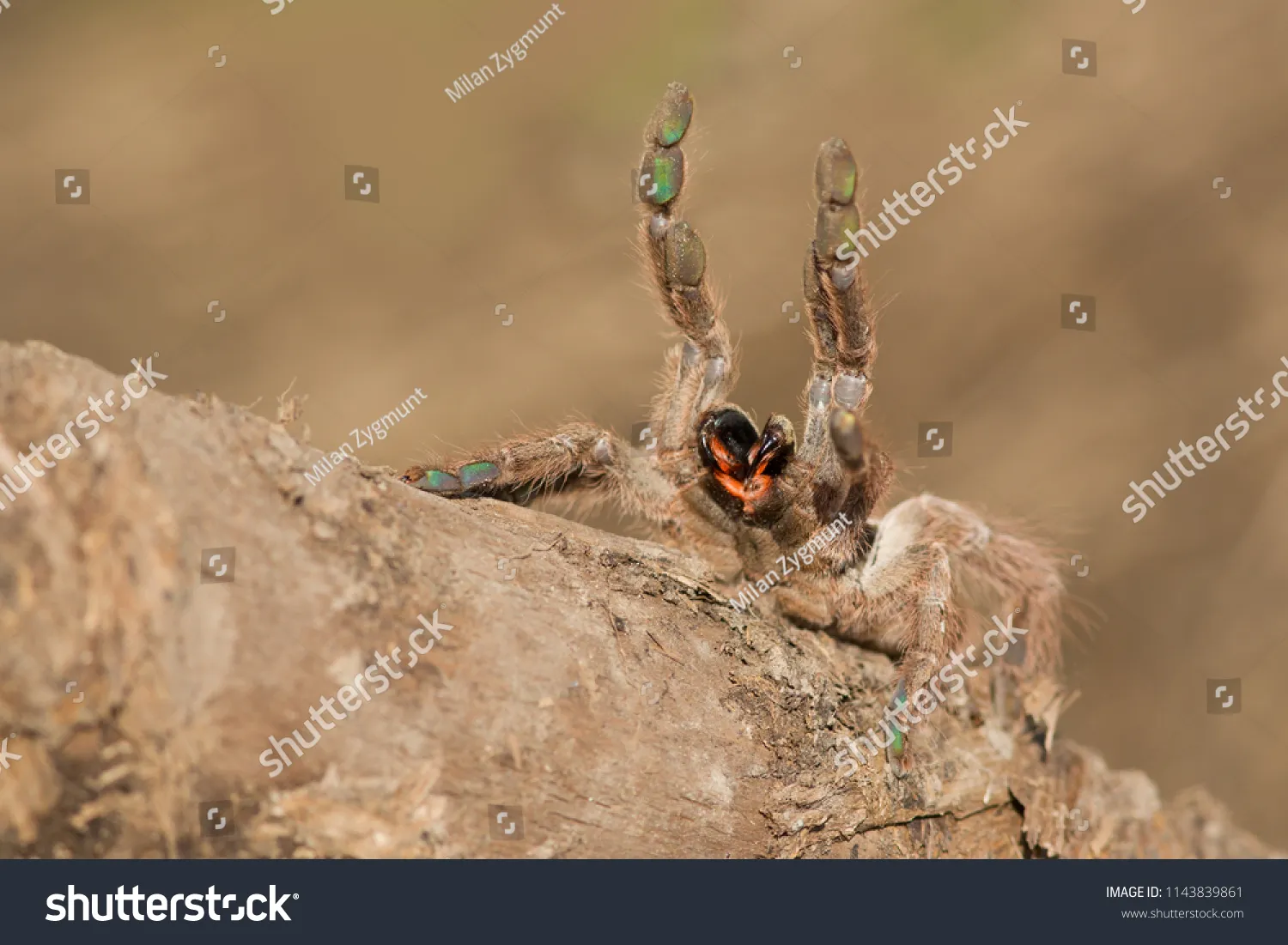
The correct setup of an enclosure is essential for the well-being of Old World tarantulas. It provides a safe and comfortable environment and meets their specific needs. This includes appropriate dimensions, substrate, decorations, and careful regulation of temperature and humidity. A well-designed enclosure will ensure your tarantula thrives. (See image: tarantula-enclosure-setup.webp)
Recommended enclosure size
The enclosure size should be appropriate for the tarantula’s size and species. A general rule is to provide an enclosure that is at least three times the leg span of the tarantula in width. Arboreal species need taller enclosures, while terrestrial species require more floor space. A suitable enclosure gives the tarantula enough space to move around, hunt, and establish a comfortable burrow. As your tarantula grows, it may require a larger enclosure to accommodate its changing needs.
Substrate and decoration
The substrate should mimic the tarantula’s natural habitat. Coconut fiber, peat moss, and vermiculite are common choices, providing moisture retention and burrowing opportunities. Decorations such as cork bark, artificial plants, and sturdy hides should be included to provide shelter and enrichment. The substrate should be deep enough for burrowing species. Regular cleaning and maintenance of the enclosure is important to maintain good hygiene and provide a healthy environment.
Humidity and temperature requirements
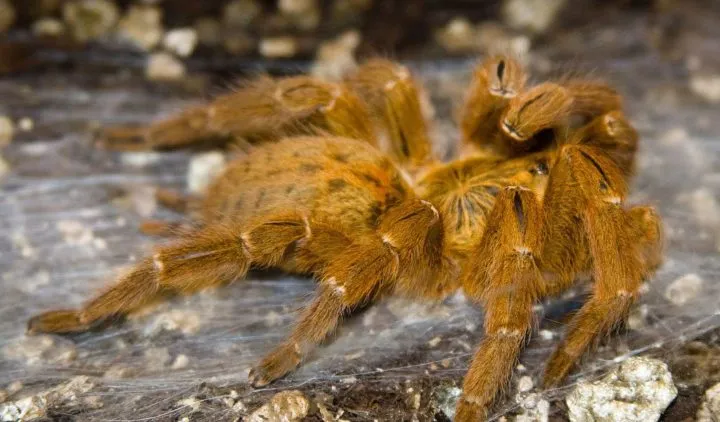
Humidity and temperature requirements vary among Old World tarantula species. Researching the specific requirements for your chosen species is essential. Generally, a temperature range of 75-85°F (24-29°C) is suitable for many species. Humidity levels can range from 60-80% depending on the species. Regular monitoring with a hygrometer and thermometer is necessary to maintain the ideal conditions. Providing proper humidity and temperature ensures the tarantula’s health and facilitates the molting process.
Venom and Handling Safety
Understanding the venom potency and effects, along with safe handling practices, is vital for those who keep Old World tarantulas. Their venom can be more potent than many New World species. Always prioritize safety, respecting the spider’s nature and taking appropriate precautions.
Venom potency and effects
Old World tarantulas typically have more potent venom than their New World counterparts. While their bites are rarely life-threatening to humans, they can cause considerable pain, muscle cramps, and other systemic symptoms. The severity of a bite depends on the species and individual sensitivity. It’s essential to be aware of these risks and take all necessary precautions to prevent bites. In case of a bite, seek medical attention and provide information about the species involved.
Safe handling practices
Handling Old World tarantulas should be avoided unless absolutely necessary. If handling is unavoidable, use long forceps to move the tarantula safely. Always approach the spider slowly and avoid sudden movements that could startle it. Keep your hands away from the enclosure and be careful when working around them. Handle them as little as possible, and always be prepared for a defensive reaction, keeping a safe distance, especially when dealing with more defensive species. (See image: tarantula-handling-safety.webp)
Lifespan and Growth
Knowing the lifespan and growth cycle of Old World tarantulas is essential for long-term care and planning. These spiders can live for many years, and their growth is a fascinating process marked by molting. Understanding the factors that influence lifespan and the stages of molting will allow you to care for these spiders.
Factors Influencing Lifespan
The lifespan of Old World tarantulas is affected by multiple factors, including species, gender, and environmental conditions. Females typically live longer than males. Proper care, including a balanced diet, appropriate temperature and humidity, and a stress-free environment, can positively impact the lifespan. The tarantula’s environment can significantly affect its lifespan, so it’s important to provide a stress-free and appropriate environment.
Molting process
Molting is a natural process where tarantulas shed their exoskeleton to grow. During this period, the spider becomes vulnerable and needs to be protected. Providing a stable environment with the correct humidity is essential for successful molting. The molting process can take several hours or even days, and the tarantula should not be disturbed during this time. After molting, the new exoskeleton is soft, and the spider needs time to harden before resuming normal activities.
Common Health Issues and Care
Like all animals, Old World tarantulas are susceptible to certain health issues. Recognizing the signs of illness and providing prompt and appropriate care is critical for their well-being. This includes preventing common diseases and maintaining a healthy living environment. Proactive care and observation can significantly improve the chances of a long and healthy life.
Preventing and treating common diseases
Common health issues in Old World tarantulas include fungal infections, mites, and parasites. Fungal infections can be prevented by maintaining proper humidity levels and substrate hygiene. Mites can be managed by quarantining new spiders and thoroughly cleaning enclosures. Early detection and treatment are key to addressing any health issues. Consult an expert for treatment and prevention methods. Regularly inspect your tarantula and enclosure for signs of illness and take swift action if needed. (See image: healthy-tarantula.webp)
Signs of a healthy tarantula
A healthy Old World tarantula is active, alert, and feeds regularly. Its abdomen should be plump, and it should exhibit normal behaviors for its species. A shiny exoskeleton and clean environment are also indications of good health. Regular observation of your tarantula is crucial. Look for any changes in behavior, appetite, or appearance, as these could indicate health issues. Promptly address any concerning signs and seek professional advice when necessary.
